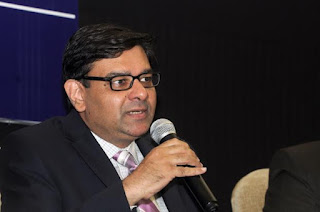Ending
months of speculation, the government has announced appointment of Urjit Patel
as the Reserve Bank of India’s (RBI) 24th governor, filling the shoes of
Raghuram Rajan whose three-year tenure ends on September 4, 2016.
By
picking Patel as the new boss of RBI, the centre has signaled continuation
of prudent monetary policy, which will act as a positive trigger for the
investors, bolstering the outlook of Asia’s third biggest economy.
Unlike
Rajan, who took over mid-crisis, the incoming governor
will inherit an economy in much better shape, with GDP growing at 7.9 per cent,
a stable currency and record foreign-exchange reserves. However, there are some
immediate challenges that Patel will have to face as the new RBI governor.
First
and foremost, after assuming office, the primary challenge in front of the new
RBI chief will be to rein in inflation as it has started inching up, led by the
food prices. The global commodity prices, particularly the oil, too have
started surging. Annual consumer price increases have also topped 6 per cent,
breaching the government’s target.
Besides
controlling inflation, Patel will face another important task of carrying
forward the clean-up exercise at the banks, particularly those in the public
sector. Besides, he may see a new breed of players coming up in the banking
sector.
Another
big challenge for Patel will be to appoint a member on the Monetary Policy
Committee (MPC) which will decide the interest rate and focus on maintaining
the inflation at 4 per cent with a plus/minus margin of 2 per
cent. Currently, the governor alone sets interest rates but now a new
six-member panel will take over before October. Three members from the RBI including
the governor and three external members appointed by the government will decide
on the interest rates.
Urjit
Patel would also be looking closely at the impending liquidity crisis in the
market. Earlier, RBI had raised about USD 35 billion through FCNR (B) deposits
in September-November 2013 and most of them are getting due this year.
Consequently, a dollar outflow of approximately 20 billion is
anticipated! Thus, Patel is expected to tread the middle path and keep
the domestic exchange rate stable.
Urjit
Patel’s appointment as the successor for Rajan has been widely hailed by both
industry and markets alike. Patel is known to be very close to Rajan, a fact
that adds to the belief that the new governor will follow in the footsteps of
his predecessor.
Patel
is someone who is well versed with the changing dynamics of the Indian economy
since early 1990s. Even during his tenure under Raghuram Rajan, the RBI
governor-designate had helped India to shift to an inflation targeting regime
for setting interest rates. Economist expects him to be a successful and
effective Central Bank’s governor who could carry forward the good work done by
Rajan and further liberalise the India’s financial
system.

No comments:
Post a Comment